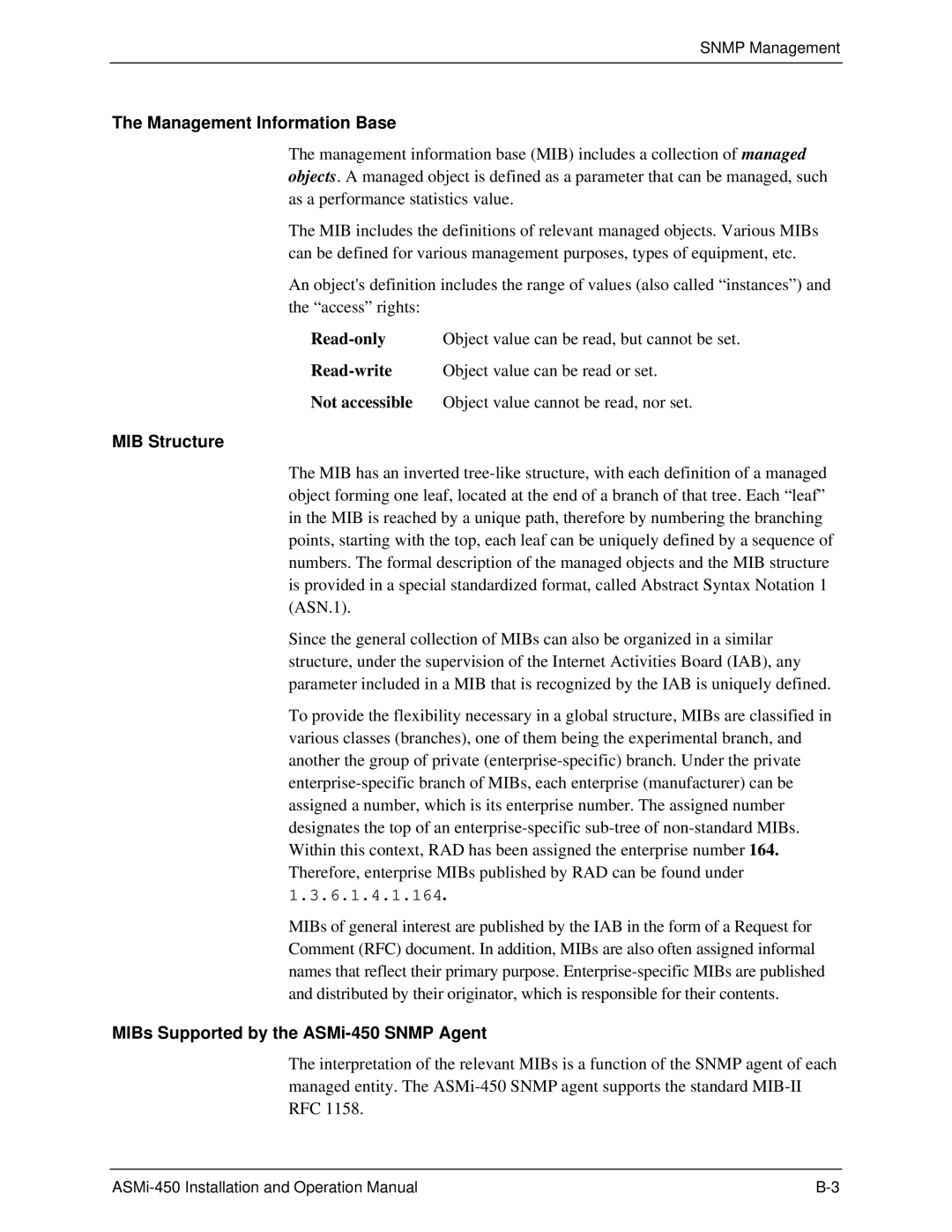
SNMP Management
The Management Information Base
The management information base (MIB) includes a collection of managed objects. A managed object is defined as a parameter that can be managed, such as a performance statistics value.
The MIB includes the definitions of relevant managed objects. Various MIBs can be defined for various management purposes, types of equipment, etc.
An object's definition includes the range of values (also called “instances”) and the “access” rights:
| Object value can be read, but cannot be set. |
Not accessible Object value cannot be read, nor set.
MIB Structure
The MIB has an inverted
Since the general collection of MIBs can also be organized in a similar structure, under the supervision of the Internet Activities Board (IAB), any parameter included in a MIB that is recognized by the IAB is uniquely defined.
To provide the flexibility necessary in a global structure, MIBs are classified in various classes (branches), one of them being the experimental branch, and another the group of private
1.3.6.1.4.1.164.
MIBs of general interest are published by the IAB in the form of a Request for Comment (RFC) document. In addition, MIBs are also often assigned informal names that reflect their primary purpose.
MIBs Supported by the ASMi-450 SNMP Agent
The interpretation of the relevant MIBs is a function of the SNMP agent of each managed entity. The
